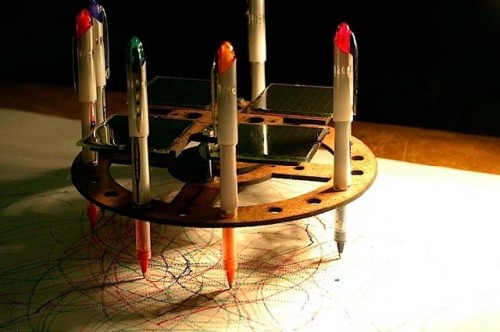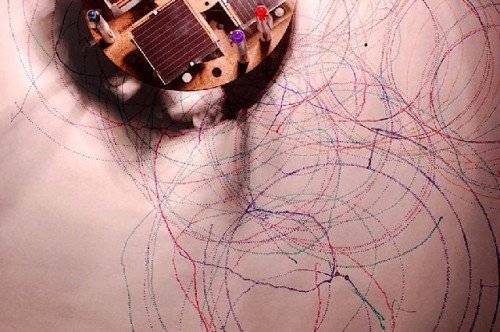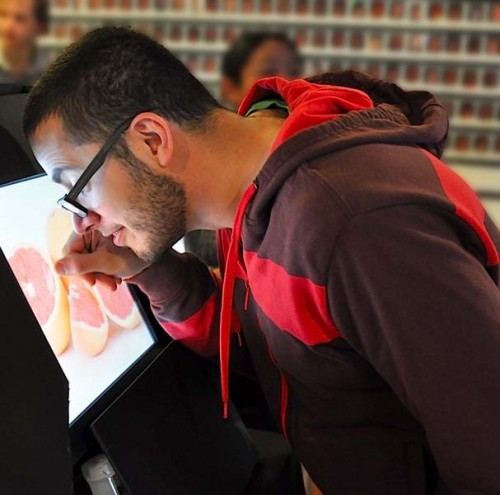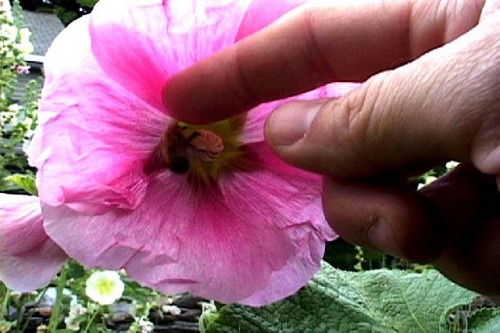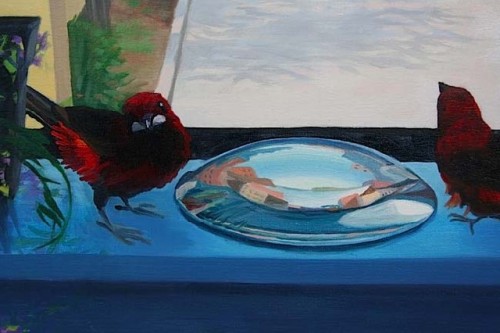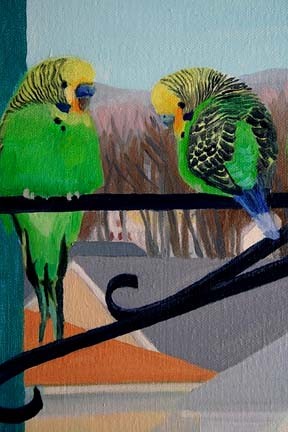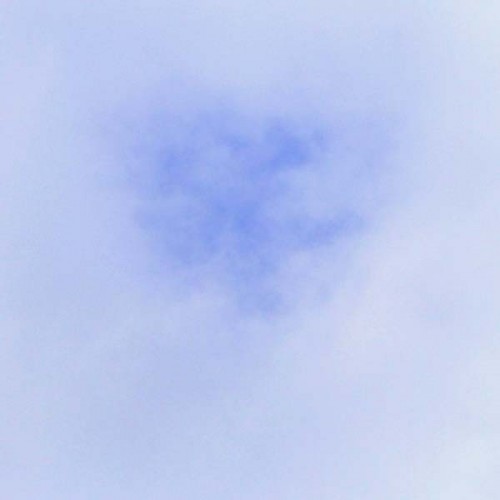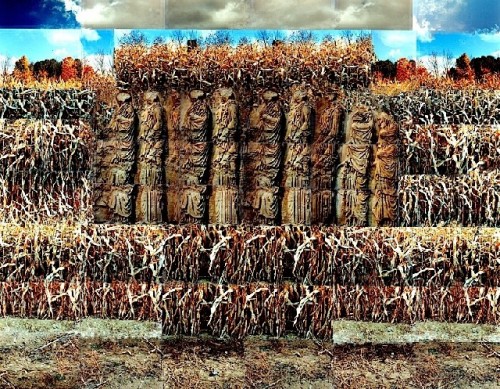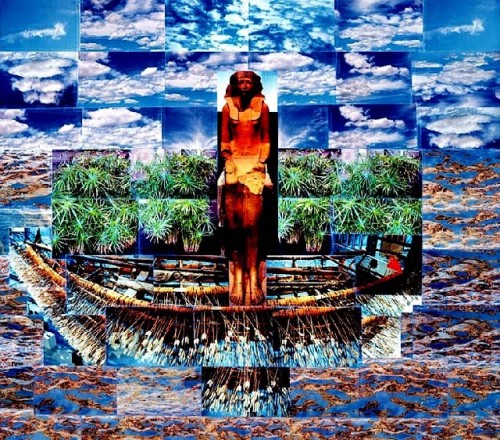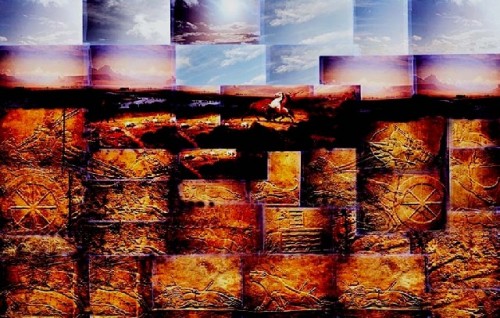Natural Selection at Greylock Arts
Adams Exhibition April 23 to June 5
By: Matt Belanger & Marianne Petit - Apr 20, 2010
Natural Selections
Greylock Arts
93 Summer Street
Adams, Mass. 01220
Curated by Marianne R. Petit & Matthew Belanger.
Artists include: Christian Cerrito, Charles Giuliano, Alex Kauffmann, Henry Klein, David Lachman, Michelle Vitale Loughlin, Jeremy Rotsztain, Martha Denmead Rose, Gregory Scheckler.
Opening Reception: Friday April 23rd 2010, 5:30 – 8:30 p.m.
Exhibit Dates & Times: April 23rd – June 5th 2010
Admission is free and open to the public.
Open Saturdays 1 – 4 p.m. and by appointment.
Appointments can be made at 413 241 8692 or email.
Greylock Arts is pleased to announce Natural Selections, a group exhibition of artistic interventions and interpretations in and of the natural world.
Artists have long drawn from their natural surroundings. For this exhibition we focus on artists whose unique collaborations and explorations into the natural world remind us of the synergism between art, nature, humanity and technology.
ART & ARTISTS
In The Storefront:
Christian Cerrito
Solar Drawing Bots by Christian Cerrito
Christian Cerrito is a New York based artist interested in fusing interactive technologies with more traditional artistic practices and ideas. Much of his recent work has been focused on the ideas of “social” interactions between people and simple machines, art making collaborations between humans and robots, and in using simple mechanical systems to re-imagine public spaces.
Cerrito holds a B.A. in sociology from Tufts University, Boston, and a B.F.A. in Studio Art from the School of the Museum of Fine Arts Boston. Additionally, he recently received his Masters Degree in Interactive Technologies from New York University’s Interactive Telecommunications Program, where he is currently employed as a Media Researcher in the fields of physical computing and solar technology.
Cerrito’s work has been featured at institutions such as the New York Hall of Science (Queens, NY), the Telfair Museum of Art (Savannah, GA), the MIT Media Lab (Cambridge, MA), and at the 2009 Burning Man Festival (Black Rock City, NV).
Water falls by Michelle Vitale Loughlin & Hydrolace by Matt Pass
With Water falls, Michelle Loughlin probes an iconic image‚ one associated with the unspoiled and pristine aspects of Nature‚ and present a more honest portrayal. She explains, “Our man made footprint has permanently altered our environment. As we try to reverse, reclaim and recreate individual concepts of Nature, our reenactments are based on mythical ideologies and places.” Loughlin subverts this iconic, romantic view of the waterfall, injecting a subtle but potent dose of reality. By stitching a variety of found objects into the flowing forms of Water falls, water bottles, latex gloves, coffee cup lids‚ she references the detritus that is an all too familiar element of most natural settings.
Her purposeful choice of a synthetic material to replicate the natural beauty of the waterfall further highlights the dichotomy between the artificial and the natural. Even the most remote and‚ unspoiled‚ places reveal the presence of Man; as Loughlin aptly points out, the man-made and the natural are no longer separate.
—Mary Birmingham, Hunterdon Art Museum 2009
Michelle Vitale Loughlin
Michelle Vitale Loughlin is an artist, curator and the Director of Education and Public Programs at the Jersey City Museum, NJ. Loughlin has created large-scale fiber installations for a variety of national and international venues including the Hogar Collection, NY, the Casaterra Residency Program, Italy and the Object and Thought Gallery, Colorado. She has received numerous grants from institutions including Goldman Sachs, the Puffin Foundation, the Dodge Foundation and the Fine Arts Work Center. She has participated in many national and international exhibitions, including the New Jersey Arts Annual, Sculptoure at the Shore Institute of Contemporary Art, the Arts and Crafts Museum, Itami, Japan and Galerie Kurt im Hirsch, Berlin, Germany. Her work has been featured in publications such as Interweave Knits, Embroidery and Surface Design Journal.
Hydrolace is a series of short sound stories that interplay with “Water falls.” It is comprised of 27 sound pockets that range from prominent to barely audible to silence (the sound of the gallery.) The soundtracks will play in continuous, random order so that it is ever changing, akin to “Water falls” viewed from countless angles and shadows.
The sound sources are mostly the waterphone, along with bowed springs, daxophone (a bowed wood instrument), glass milk bottles, tubes, hushed vocal chords and silence.
Matt Pass
Matt Pass is a singer sounder, sculpting aural spaces with voices, delays, filters, field findings, tubes, strings and springs, combining elements of chants, choral clustards, rubbing frequencies, ethniques and analog electronicisms.
In The Gallery:
Charles Giuliano
Photo Collages by Charles Giuliano
The collage work has evolved over a couple of decades. The first exhibition “Riders of the Storm” was inspired by a visit and documentation of Jim Morrison’s tomb at Pere Lachaise Cemetery in Paris. The project included an installation recreation of the grave in a conceptual manner. From black and white, collaged prints, it evolved to shooting rolls of color film at a single site and assembling the prints. At first fairly straight panoramas. That second show was titled “Transvedutes.” The next phases entailed combining paintings and sculptures from museums embedded in nature. To give iconic material a new context restoring them to life. In this show “Harvest Festival” conflates the frieze of Parthenon sculpture with a corn field in the fall. “Lion King” combines the Assyrian Lion Hunt with Bierstadt’s “Last of the Buffalo” and an actual sky. The series encourages looking at historical works as encoded with signifiers. The intention is to liberate the spirit of these works from the stultifying confines of the museum. This project is an aesthetic prison break casting off the shackles and chains of art history.
Charles Giuliano is a critic, artist and curator. He is the publisher / editor of Berkshire Fine Arts.com. It was founded four years ago and to date he has published some 600 articles. He has had numerous gallery and museum exhibitions. The work is in the collection of the Museum of Fine Arts, Boston, The Rose Art Museum, the Danforth Museum of Art, the MIT student loan collection, the Boston Public Library, and the Fitchburg Art Museum. He is retired from directing the gallery program of New England School of Art / Suffolk University where he taught art history and humanities. He also taught at Boston University and U. Mass. Lowell. His is a former editor of Art New England and an Art News correspondent. He held staff reporter positions with the Boston Herald Traveler and Boston After Dark / Boston Phoenix.
Henry Klein
Streams and Rocks. I share my appreciation of nature through painting it and showing it.
Alex Kauffman
Scratch ‘N Sniff by Alex Kauffmann
Scratch ‘N Sniff is a computer monitor that behaves as a scratch ‘n sniff sticker: vigorously rub your fingernail across an image to make the screen smell like whatever is pictured.
Smell is the most evocative of our senses but also the most elusive. Scratch ‘N Sniff is a direct and counterintuitive transposition of an analog interaction into the digital realm. The piece playfully explores technology’s ability to elicit wonder (and credulity) from even the most rational and technically adept individuals and pokes a bit of fun at our quest to turn the real world into an immersive digital facsimile.
Both Alex Kauffmann and his work are simple, beautiful, and absurd. He currently lives in New York City, where he is a graduate student in NYU’s Interactive Telecommunications Program.
David Lachman
Flower to Flower & Queen and Drone by David Lachman
“flower to flower‚” is an experimental piece where a recollection of petting bees in childhood is used as a lens to explore the act of memory. Selective use of editing and monologue help create a state of intimacy where viewers question their own memories, and can then explore memory as a conscious act.
“Queen and Drone” is a point of sale merchandising display for a special edition of local honey featuring Matt and Marianne and Greylock Arts. Please buy a bottle!
David Lachman is an interdisciplinary artist who works in painting, installation, and video. He earned his MFA in painting and video from Northwestern University, and has been exhibited at museums, galleries and alternative venues spanning the globe in over 20 countries on 6 continents, including the The Cultural Centre of Fljotsdahsherao in Egilsstaoir, Iceland, and the Amundson-Scott South Pole Station, Antarctica. In 2009, after decades of fascination with insects he became a beekeeper.
Martha Denmead Rose
Birds by Martha Denmead Rose
I have been profoundly distressed by the human degradation of the natural environment. Many of my paintings are responses to the confrontation between the human, the natural, and the technological. My current paintings show worries about human impact on bird life.
My primary interest is in northern landscape and light. I have painted in northern Europe and the east coast from Newfoundland to Virginia. Most recently I live in southern Vermont and work in a studio in Adams, MA.
Jeremy Rotsztain
Americana and Technology by Jeremy Rotsztain
Americana and Technology is a media installation that contrasts two popular depictions of the American landscape – in the 19th century Hudson River School painting movement and in contemporary science fiction cinema – to examine the stories that influence our beliefs about technology’s effect on society. The installation is composed of two large-scale prints (approximately 60” x 40”) and two small computer displays. The prints are computational paintings – computer-generated compositions – that show the American landscape before and after technology. On the displays, a customized software program demonstrates the composition process – sampling textures from digital reproductions of Hudson River School paintings and still frames from science fiction films – slowly constructing the two printed landscapes and creating a cultural gestalt of technology using the visual language and symbolism of these forms.
Jeremy Rotsztain is a Canadian video artist and software developer whose hybrid practice incorporates cinema, painting, computer science, animation, imaging, and architecture. In his video installations and digital images, Jeremy analyzes mass culture, especially Hollywood cinema, examining its aesthetic experience and its cultural meanings. Using serial approaches (looping) and sampling techniques (cutting and pasting), he searches for and highlights narrative patterns and tendencies in contemporary culture. Jeremy recently completed his Master’s degree in art and technology at the Interactive Telecommunications Program (ITP) at New York University and is currently based in Los Angeles.
Gregory Scheckler
Sky Stories by Gregory Scheckler
In this epoch of climate change, one way to interact directly with the world is to view the sky where you live. These photos are a part of an ongoing series of sky photographs by Gregory Scheckler, from the Berkshires of Massachusetts. Summer humidity becomes pink or golden haze, dark shadows reflect the greenery of the mountains, complex layers reveal pockets of light and color. The imagery allows for reflective meditation on fundamental environmental issues and nature’s beauty.
Gregory Scheckler was brought up in Wisconsin, and earned degrees from the University of Notre Dame, Washington University in St. Louis, and Utah State University. He also took graduate coursework at The New York Academy of Art and workshops with The Angel Art Academy in Florence, Italy. Today he is Associate Professor of Art at the Massachusetts College of Liberal Arts, where he teaches painting, drawing, critical thinking and how to use your imagination. Although trained as a realist painter, Gregory Scheckler’s creativity embraces diverse formats from academic realism to cartoony art-brut, nature photography, abstraction, creative writing and many other experiments – his artwork has been shown in nearly sixty exhibits, with writings or images in more than forty publications online and in print, and pictures and words in five books. He is currently working on a new series of landscape paintings (available via Ferrin Gallery, Pittsfield, MA) plus a group of narrative paintings for a solo show scheduled for Fall 2011, and college-level essays and a book on how to compose pictures. He is married to the artist Laura Christensen. Both are avid telemark skiers, and enjoy hiking too. Residing in the Berkshires of Western Massachusetts, they provide a home for two lovely cats, Jupiter and Masaccio.

